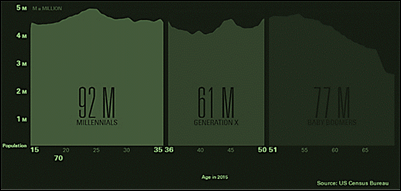Readers Write: Telehealth Can Create a Healthcare Nirvana: More Access, Lower Cost, and Enhanced Experience
Telehealth Can Create a Healthcare Nirvana: More Access, Lower Cost, and Enhanced Experience
By Rohan Kulkarni

Healthcare in the United States generally inspires a sense of foreboding despite the progress that has been made since the 2010 enactment of the Affordable Care Act (ACA). While there continues to be challenges on both the cost of care and patient experience fronts, I believe that the most progress has and can continue to occur with access to care, which can in turn impact cost and experience.
It’s important to recognize the evolving patient population and how that will impact healthcare over the next 5-10 years.

The Millennial generation was recently recognized as the largest generation, overtaking the baby boomers. They make up approximately a third of our total population.
The implications of that are highly consequential. Consider this: Millennials are currently low consumers of healthcare, accounting for less than 10 percent of the total spend. But historically, care consumption begins to steadily rise at a dramatic pace after women turn 25 and after men turn 30. This trend indicates that over the next five years, Millennial consumption of healthcare will significantly increase. Given the size and consumption preferences of that population, we are going to see marked changes in how healthcare is delivered.
One area in which Millennials will drive a seismic shift is the engagement of providers through virtual and mobile channels. It is seismic not only because of the size of the generational population, but their impact on the adjacent generation of Gen X who have had to continuously adapt to the new technologies. Let us consider a few ways in which they will manifest the idea.
Access
- Alternate channels. In early 2016, Oliver Wyman published a white paper titled “The new front door to healthcare is here” in which they describe non-primary care physician interaction such as pharmacy- based clinics, mobile apps, and telemedicine in an alternate setting as the new front door of healthcare. As consumers find these alternate channels better, easier to access, and possibly less expensive, close to $200 billion in current healthcare spend is poised to flow from traditional venues to one or more of these alternatives. In fact, once you use a retail clinic or telemedicine, you are less likely to use traditional care.
- Increased conditions supported. Telemedicine used to be for the simple stuff. Not any more. It is able to support more complex situations including strokes, intensive care unit situations, and behavioral health. As the number of conditions expands from the simple to the complex and as the monitoring of chronic conditions such as sugar levels for diabetes, heart rate, blood pressure, etc. becomes more stable, telemedicine will potentially become the channel of choice for healthcare interactions.
Cost
- Impact on cost of care. There is a sense that telemedicine will bend the cost curve. However, it will be a while before the needle begins to move in any meaningful manner. In the short term, providers will need to strategically invest in telemedicine to extend their front offices all the way to patient homes or wherever it is that patients choose to connect from. But this investment will be a fraction of what it would take to build new physical structures. Consequently, there will be near term capital cost benefits with longer term operational savings that will be sustainable and meaningful.
- Payers are paying. Recognizing the value of telemedicine both in its ability to provide care and optimize costs in the midterm, more payers are willing to reimburse these costs. Today, 29 states require insurers to pay for telemedicine services. Medicare is also beginning to pay for telemedicine-based care, which is a strong signal of the faith in the efficacy of this newer channel.
Experience
- Convenience. Telemedicine offers new levels of convenience: the ability to get healthcare from the comfort of one’s home is very compelling. Paired with the prospect of having the physician send prescriptions to the local pharmacy that can deliver it to the home enhances medication adherence. This heightened level of convenience will influence the use of care in a timely manner. Patients will be able to avoid driving through traffic and decreased productivity at work but still receive the care they need.
- Streamlined service. There is a very high likelihood that healthcare is about to be digitized end to end like never before, and that has healthy consequences. The telemedicine platform will be connected to the EMR platform, claims, and revenue cycle management, driving new levels of efficiency and enhanced patient experience. Healthcare will be at the tip of your digits.
Telemedicine is coming of age thanks to the large Millennial population that is likely to consume healthcare through this newer channel and payers’ willingness to pay for it. It is improving access at a fraction of the cost of a new ambulatory setup and giving rural constituents a chance for good healthcare. While still very small as a channel for healthcare delivery, it is about to be turned on its head like never before.
Rohan Kulkarni is vice president of strategy and portfolio for Xerox Healthcare Business Group.


"most people just go to Epic" that's a problem because then EPIC becomes a monopoly in healthcare, if it isn't…